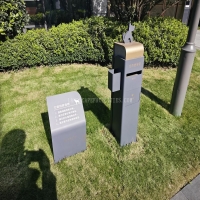Welcome to the website for landscape facilities products and knowledge.
What are the most significant differences between the table’s performance in urban versus rural settings?
The performance and longevity of tables vary dramatically between urban and rural environments due to distinct environmental factors and usage patterns. In densely populated urban areas, tables face constant exposure to industrial pollution, vehicle emissions, and higher concentrations of acidic compounds that accelerate material degradation. The chemical composition of urban air interacts with table surfaces, causing premature corrosion of metal components, fading of protective coatings, and structural weakening of wooden elements. Additionally, urban tables experience more intensive usage cycles with higher frequency of public interaction, vandalism risks, and space constraints that demand compact, durable designs.
Conversely, rural settings present different challenges centered around weather extremes and natural elements. Tables in countryside locations withstand prolonged UV radiation exposure, temperature fluctuations, and biological threats like mold, insects, and vegetation overgrowth. While rural air contains fewer industrial pollutants, the absence of urban canopy cover means tables face direct sunlight for extended periods, causing wood to warp and plastics to become brittle. The moisture content in rural environments also varies significantly, with tables near water sources experiencing accelerated wood rot and metal oxidation.
Material selection proves critical for optimal performance in each setting. Urban tables benefit from powder-coated metals, commercial-grade plastics, and treated hardwoods resistant to chemical exposure and heavy use. Rural tables require materials with inherent weather resistance, such as naturally durable timber species, stainless steel components, and UV-stabilized polymers. Maintenance requirements differ substantially between environments, with urban tables needing frequent cleaning to remove pollutant buildup, while rural tables require regular inspections for biological damage and protective coating reapplications.
The installation infrastructure also impacts performance disparities. Urban tables often feature permanent, reinforced anchoring systems to prevent theft and withstand high-traffic usage, whereas rural installations may prioritize mobility and minimal ground disturbance. Climate change introduces additional considerations, with urban heat island effects intensifying thermal stress on tables, while rural areas face increasing weather volatility. Understanding these environmental distinctions enables better table selection, appropriate maintenance scheduling, and longer functional lifespan regardless of setting.
Related search:

Recommendation
Outdoor cat and dog feces trash can; Community pet trash can; Metal multi-color design